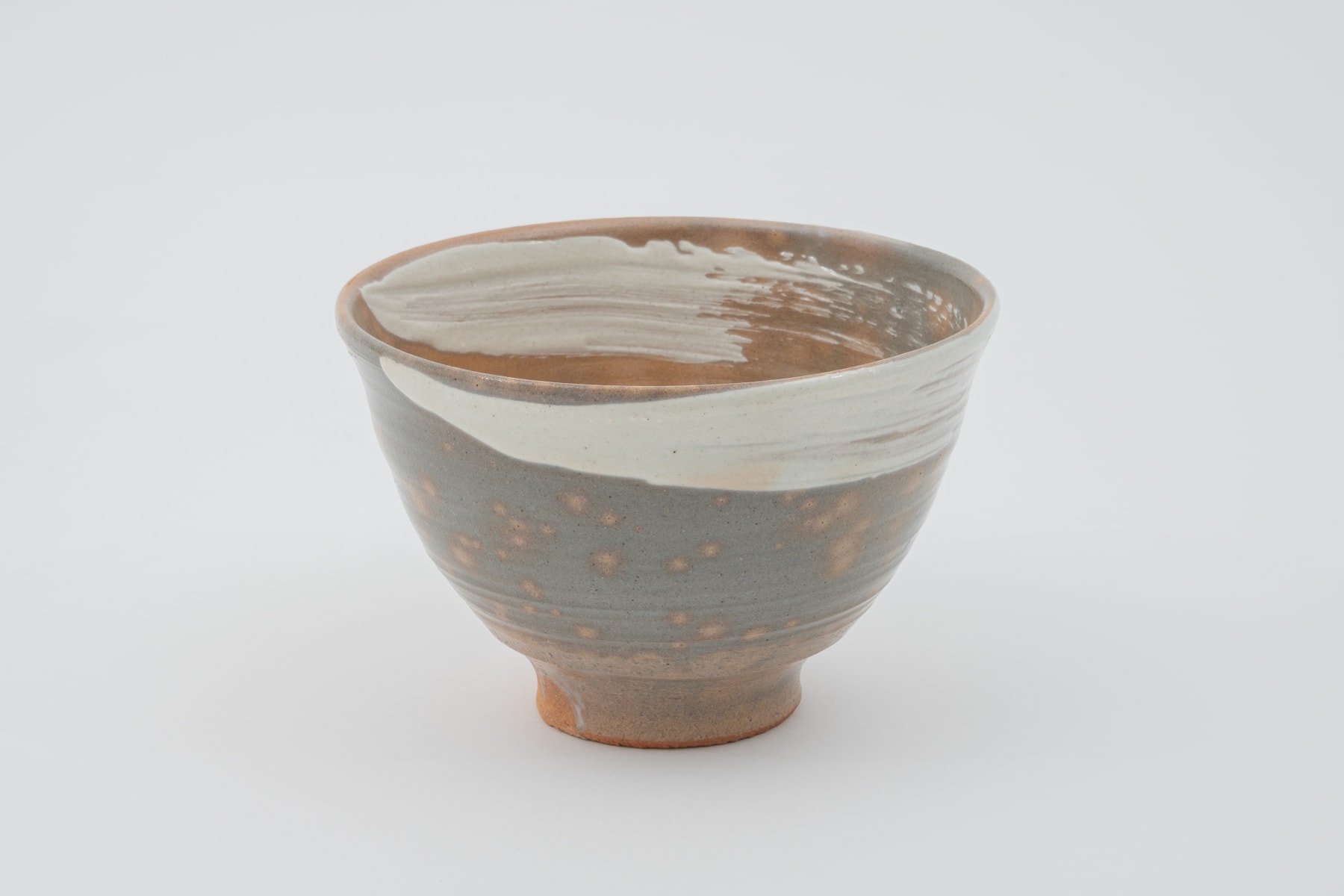Hosai Matsubayashi XVI
8.3 x 12.9 cm
Further images
At the Asahi studios, it has been customary for grandfather to teach the grandchildren about clay, perhaps assuring a two-generation transferal of techniques and sensibilities. Similarly, the family’s clay holdings are often stored across generations, drawn from the Uji region and fermented in their storehouse for up to 100 years. Mixed with waters from the Uji River, Asahi Pottery’s clays are characteristically smooth texture and even color.
Generations of Matsubayashi artisans have worked within this lineage, and each has a chance to make their mark with personal expression. While his work is notable for its modern appearance, Matsubayashi XVI continues to evolve the Asahi kiln’s signature Kase glaze effect which imparts the appearance of deer or fawn fur onto cha-wan (teabowls). The Kase cha-wan use pale yellow or red clays to show the spotted glaze with nuanced effect. Another distinctive glaze developed by Matsubayashi XVI called Geppaku (“moon white”) appears on water-containers and cha-wan. Geppaku glaze is light blue in color, opaque and gesturally applied to reveal a syrupy consistency, overlapping with other gestural marks in lacquer, gold or platinum. The artist also exhibits bowls and vases with matte finished slipware, revealing layers of color. In each of these works, the refined clays of Asahi Pottery are revealed under the special glazes, in keeping with the aesthetic ethos of kirei-sabi*, the appreciation of beautiful things.













